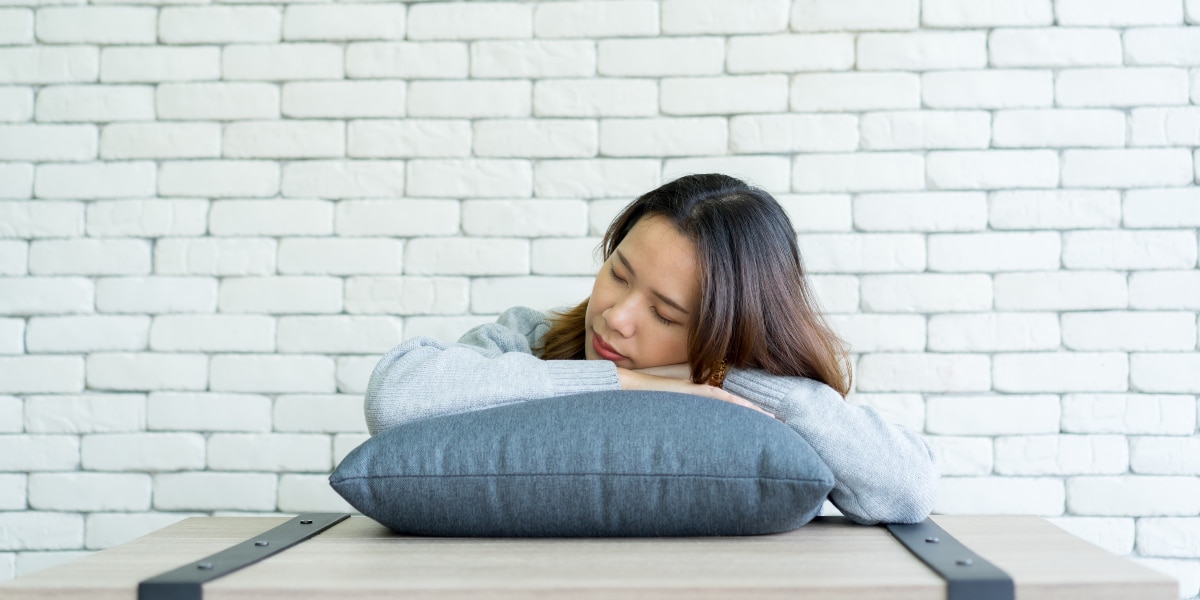Sleep Better & Improve Mood With Light Therapy
Winter months can be rough on our mood and sleep. Fewer daylight hours alone leave many feeling down, and places with snowy and cold weather leave the sky gray for days at a time. Lack of sunlight during winter months mixed with artificial indoor lights and blue light from smartphone, computer, and tablet screens all impact our circadian rhythm, which affects our energy, mood, and sleep.
What is Our Circadian Rhythm?
All living things have a circadian rhythm. This rhythm is often referred to as the “internal clock” which controls when we feel awake versus when we feel tired. You may have also heard this called the sleep/wake cycle.
Circadian rhythms are different for other organisms, but in humans, we tend to have a 24-hour cycle that generally follows day and night. The National Sleep Foundation describes the human adult circadian rhythm as having the biggest energy dips between 2AM-4AM and 1PM-3PM. Although this can vary naturally, depending on if someone is an early bird or a night owl.
Impact of Light on Sleep & Mood
The hypothalamus is the part of your brain responsible for your circadian rhythm, and it’s affected by outside forces like light and dark. When it’s dark, your hypothalamus will send out melatonin, a hormone that makes you sleepy. Things like prolonged light exposure can disrupt this cycle by not signaling your brain that it’s time to rest. This is why spending time on your smartphone before bed can make it harder to fall asleep.
Artificial lights, from floor lamps to phone screens, have allowed us to continue working and playing long past sundown. But doing so regularly can affect your circadian rhythm. Disrupting the circadian rhythm is linked to a variety of issues, including depression, certain types of cancer, and cardiovascular disease.
Additionally, we need natural light. Our circadian rhythms were set long before the advent of light bulbs, so being exposed to natural sunlight is important for regulating this cycle. While we spend our workday under light, the fluorescent bulbs in the office aren’t a replacement for sunlight. And during the winter, natural light can be scarce or even absent in northern and southernmost regions. However, phone and laptop screens emit blue light, which is closer to natural sunlight, but getting blue light at the wrong time (i.e. when you get home from work in the evening) can upset your circadian rhythm, too, by tricking the body into staying awake.
You know the day after a poor night’s sleep is rough; your patience might be short, or you might struggle to focus. But regularly disrupted sleep patterns impact our mental health in a big way. In fact, a 2013 literature review found that most people diagnosed with a mood disorder also had disrupted circadian rhythms.
Types of Light Therapy for Improving Sleep & Mood
There’s two different kinds of light-based therapy to help correct circadian rhythm disruptions: bright light and red light. They accomplish different goals, so it’s important to use them properly.
Bright Light
A bright light box mimics natural sunlight. In winter months when sunlight is scarce, using a bright light box can help you feel more awake. Bright light is most effective when used in the morning, and you don’t need to be in it for long. 30 minutes in the morning, perhaps while enjoying your morning coffee, is enough.
Red Light
Red light therapy, also called photobiomodulation, functions opposite from bright light. Instead of signaling to the body it’s time to wake up, red light tells the body to produce and release melatonin, helping you to fall asleep. Being surrounded by blue light at night keeps you awake, but using red light instead helps you fall asleep.
However, replacing your regular light bulbs with red-colored bulbs isn’t going to help much, if at all. Special red light devices emit specific wavelengths of red light that are readily absorbed by the body—these are the devices that will give you results. 15-30 minutes of exposure at a time is enough, and the time will depend on what kind of device you’re using. For example, a session in a TheraLight Light Bed shouldn’t exceed 20 minutes.
If you feel light is affecting your sleep patterns, also consider where you might be getting the wrong light at the wrong time. Small changes like reading a book in bed instead of reading or playing a game on your phone reduces blue light exposure at night.
Sleep is tied tightly to our mood and physical health. If we sleep better, we feel better. While we can’t control the sun or the seasons, there are some small lifestyle changes to help, such as not using your smartphone to read before bed, and light devices designed to help with waking and sleeping.
If you’re interested in trying red light therapy, click the link below to find a provider who offers TheraLight Full Body Photobiomodulation light bed services.

